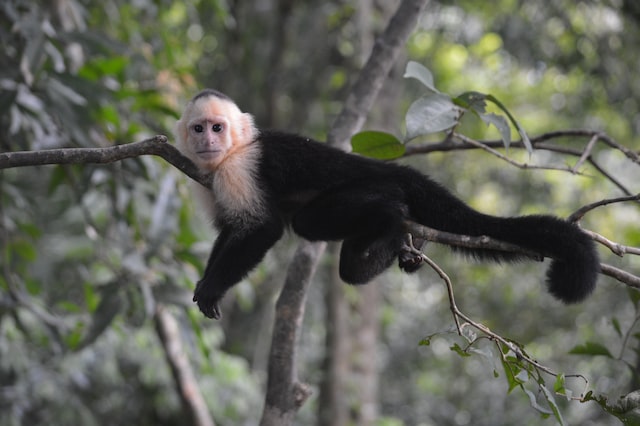Capuchin monkeys are a species of New World monkeys that are native to Central and South America. In Costa Rica, capuchin monkeys are one of the most common primates and are found in a variety of habitats, including tropical forests, mangrove swamps, and coastal regions.
These monkeys are well known for their intelligence and their ability to use tools. They have been observed using rocks to crack open nuts and using sticks to probe for insects. They are also known for their ability to problem-solve and adapt to new situations.
Capuchin monkeys are omnivores, and their diet consists of a variety of foods including fruits, seeds, insects, and small animals. They are highly social animals and live in large groups, typically led by a dominant male. The social structure of these groups is complex and includes grooming behavior and alliances among members.
In Costa Rica, capuchin monkeys are a popular attraction for tourists visiting national parks and wildlife reserves. They are often seen in the trees along the trails or near the visitor centers. Visitors are advised to maintain a safe distance and not to feed the monkeys, as this can disrupt their natural behavior and lead to negative interactions between the monkeys and humans.
The conservation status of capuchin monkeys in Costa Rica is of concern, as their populations have been declining due to habitat loss and hunting for their meat and pets. Conservation efforts are underway to protect their habitats and to educate the local communities about the importance of preserving these primates.
Capuchin monkeys are fascinating creatures that play an important role in the ecosystems of Costa Rica. They are intelligent, social animals that are a joy to observe and an important part of the country’s biodiversity. By protecting their habitats and respecting their behavior, we can ensure that future generations can continue to enjoy these amazing primates.






